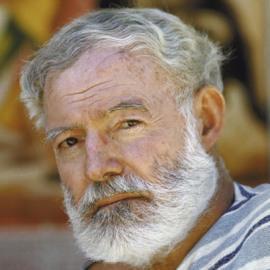The most essential gift for a good writer is a built-in, shock-proof, shit detector. - Ernest Hemingway
 Major events always provide an excuse for governments to “clean things up” in the host cities before the guests arrive. These include World’s Fairs and Olympic Games. Police sweep undesirable, embarrassing, ugly people out of public view. They throw them into jails or exile them for the duration. The victims vary with the time and place. The poor, the homeless, unpopular minority groups, drug addicts and gay people have all been among them. The list always includes sex workers. Moralists in countries where prostitution is legal still feel they must purge it from visitor areas. They don’t want the visitors to see it, even in Greece or Brazil. Bigotry is also heightened by such events. Those so predisposed fear strangers coming to town, bringing with them outlandish and alien forms of sin and crime. Together, these two factors may be the origin of one of the strangest and most persistent myths of our time. Tens of thousands of whores wander about the world from mega-event to mega-event. They are not impeded by the usual logistics of transport and lodging.
Major events always provide an excuse for governments to “clean things up” in the host cities before the guests arrive. These include World’s Fairs and Olympic Games. Police sweep undesirable, embarrassing, ugly people out of public view. They throw them into jails or exile them for the duration. The victims vary with the time and place. The poor, the homeless, unpopular minority groups, drug addicts and gay people have all been among them. The list always includes sex workers. Moralists in countries where prostitution is legal still feel they must purge it from visitor areas. They don’t want the visitors to see it, even in Greece or Brazil. Bigotry is also heightened by such events. Those so predisposed fear strangers coming to town, bringing with them outlandish and alien forms of sin and crime. Together, these two factors may be the origin of one of the strangest and most persistent myths of our time. Tens of thousands of whores wander about the world from mega-event to mega-event. They are not impeded by the usual logistics of transport and lodging.
The legend seems to have first appeared in conjunction with the 2004 Olympics in Athens. Prohibitionists depicted sex work as “sex trafficking” since the late 1990s. But the moral panic seems to have begun in earnest in January of 2004. Athenian officials went through the usual pre-Olympic cleansing procedure. They raided brothels for bogus violations of zoning restrictions. A Greek sex workers’ union complained. They said the city would increase illegal prostitution by making it difficult to work in legal brothels. European prohibitionists twisted this into “Athens is encouraging sex tourism.”
The growing “anti-trafficking” movement used bad stats. They claimed that “sex trafficking increased by 95 percent during the Olympics. And they did it by the end of the year. Then anti-sex worker groups predicted that about 40,000 women would be “trafficked” into Germany. They meant for the 2006 FIFA World Cup. It was bizarre. Of course, nothing of the kind happened. Police raided 71 brothels, but only came up with five cases of exploitation they believed linked to the event. The Global Alliance Against Traffic in Women investigated the myth in its 2011 report. The report’s name was “What’s the Cost of a Rumour?”, and it was unable to find a credible source for the “40,000” figure. It seems somebody made it up. But it has hung on like a tick since then. It accompanies every major sporting event. Some of them were the 2010 World Cup in South Africa, the 2010 Olympics in Vancouver, and the 2012 Olympics in London. Massive police crackdowns cost about £500,000 in London. They found no significant increase in prostitution, coerced or otherwise. Neither has anyone else.
By 2008, the myth reached the United States. It became attached to the Super Bowl in place of the fading but also spurious claim about domestic violence. You know the one. The story that year took the form of police statements about “warnings” that they “[were] prepared for”. But by the following year police and other officials in Tampa had turned the rumor into a campaign. They bagged exactly one quarry. She was a 14-year-old. Her pimps were two clueless individuals. They called her a “Super Bowl Special” on Craigslist. Ever since, prohibitionists repeat the detail as part of their catechism.
The Florida Department of Children and Families claimed to have “rescued” 24 other people. This is not substantiated. But that number pales beside the grandiosity of another claim. The claim was that “‘tens of thousands of people‘…[were] sold into the sex trade during Miami’s Super Bowl in 2010.” The claim was that most of them were young girls. Miami was the first instance of full-blown circus-like hype. This hype has characterized the buildup to the game in later years. Members of “anti-trafficking” groups descend in droves upon the host city. They do it to “raise awareness” and “rescue victims”.
Texas Attorney General Greg Abbott would not to be outdone. He declared the Super Bowl “one of the largest human trafficking events in the United States”. He organized a huge “task force” involving a dozen different federal, state and local agencies. He did this in preparation for the Dallas game (2011). He missed no opportunity to pontificate about “pimps” and Backpage.com. The total haul from all this effort? One would-be pimp who got the idea from hearing the myth on television.
But legends like this take on a life of their own, which mere facts cannot end. By July, Indiana’s attorney general, Greg Zoeller, got the Indianapolis Super Bowl bandwagon rolling. He made the claim that the Texans had made “133 separate human trafficking related arrests”. They picked a two and a half week period around the game. Then they claimed every vice arrest made in the Dallas-Fort Worth Metroplex was “trafficking”. It was dishonest. The number has since become part of the narrative.
The hype around the New Orleans game last year was somewhat muted. But Cindy McCain seems unwilling to wait her turn. She is already beating the drum over “human trafficking” for the 2015 Super Bowl in Phoenix. The myth is not limited to the Super Bowl any more. In the past two years people have made similar claims about other large football games and sporting events. They range from the Kentucky Derby to the Sturgis Motorcycle Rally to hunting season in rural Minnesota.
 Most of the media have been complicit in spreading this lurid fantasy, but there have been a few dissenting voices. One is “Papa” Kotz of Village Voice Media, who interviewed me for “The Super Bowl Prostitute Myth” three years ago. He expanded upon that article for “The Super Bowl Prostitution Hoax” the following year. Several others articles quoted the latter piece since then. One was this year’s “The Super Bowl Sex-Trafficking Story That Just Won’t Die”. It also references the GAATW report cited above.
Most of the media have been complicit in spreading this lurid fantasy, but there have been a few dissenting voices. One is “Papa” Kotz of Village Voice Media, who interviewed me for “The Super Bowl Prostitute Myth” three years ago. He expanded upon that article for “The Super Bowl Prostitution Hoax” the following year. Several others articles quoted the latter piece since then. One was this year’s “The Super Bowl Sex-Trafficking Story That Just Won’t Die”. It also references the GAATW report cited above.
Reporters can locate such articles with a quick search. It’s easy. But even if they’re too dumb to handle that, they could just go to Snopes.com, which has listed the story as false since February 2012. But sex sells and the “rescue industry” brings in at least tens of millions of dollars per year. Anthropologist and commercial sex researcher Dr. Laura Agustín called it that. The “rescue industry”, I mean. So there are quite a few people in and out of government with a vested interest in keeping the myth going. Even if it’s destructive, absurd, and easy to show up as false.
But there’s a glimmer of hope. An article reports that some “anti-trafficking” folks are unhappy with the legend. It was in Canada’s National Post, but I won’t quote it because it’s too hard to read. True Believers will ignore anything skeptics or sex worker rights advocates have to say about the issue. But they may listen to those they consider fellow travelers. With any luck the Super Bowl Prostitute Invasion story may finally be on the way out. We can only hope that the “sex trafficking” hysteria of which it is a part will follow close behind.
